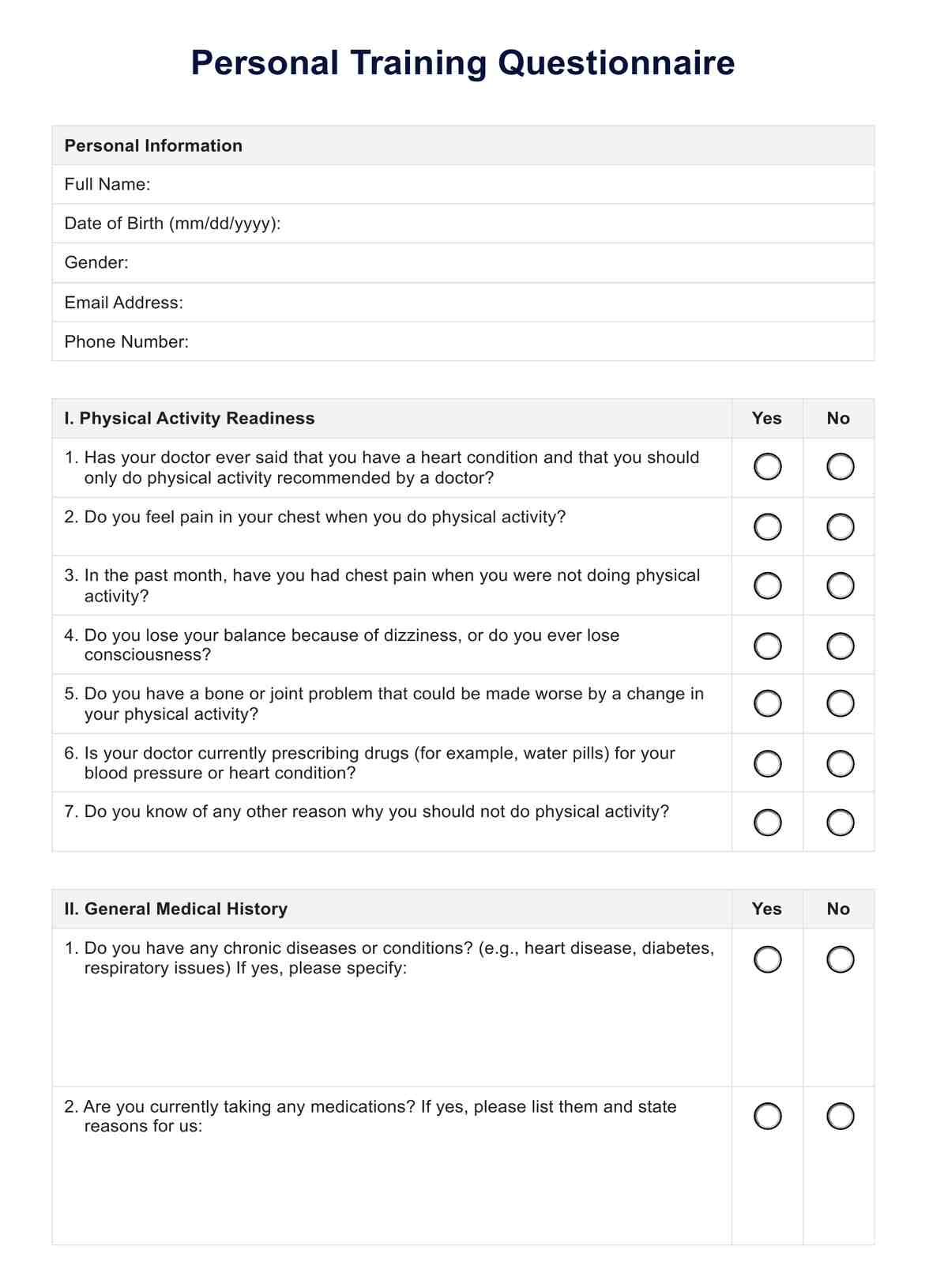The questionnaire responses should be analyzed to create a personalized fitness plan tailored to the client's fitness level, medical history, and goals. Additionally, these responses can guide an initial consultation, set SMART (Specific, Measurable, Achievable, Relevant, and Time-bound) goals, and provide a benchmark for measuring progress over time.

Personal Training Questionnaire
Access a comprehensive Personal Training Questionnaire to integrate when onboarding new clients to ensure a personalized fitness plan.
Personal Training Questionnaire Template
Commonly asked questions
Revisiting the questionnaire form with your client every 3 to 6 months is recommended. However, this frequency can vary based on individual client progress, changes in their health status, or modifications in their fitness goals.
Client data can be effectively kept safe by using secure systems that comply with privacy laws, implementing strong passwords, providing employee training on data security, conducting regular system updates, and doing regular backups. If you're using software like Carepatron, peace of mind comes from built-in data security features that adhere to rigorous standards, such as the Health Insurance Portability and Accountability Act (HIPAA).
EHR and practice management software
Get started for free
*No credit card required
Free
$0/usd
Unlimited clients
Telehealth
1GB of storage
Client portal text
Automated billing and online payments











